October 15, 2017
Martha O'Kennon
Rain. Where were you when we needed you? Thanks to your absence, my asters had the WORST year ever. Next year I will court a tempest by watering the whole habitat often.
As you can probably imagine, we haven't had much in the way of gorgeous flowers. The giant hibiscus had NO blossoms this year. But yesterday just as I was deciding whether or not it was time to bring in the smaller non-hardy hibiscus on the deck, I discovered that it had BLOOMED! The pond image shows a lily opening. I finally pulled the leaf netting off the pond because Froggy was having such a hard time slipping under it to come and go to and from the water. Yes, here's Froggy!
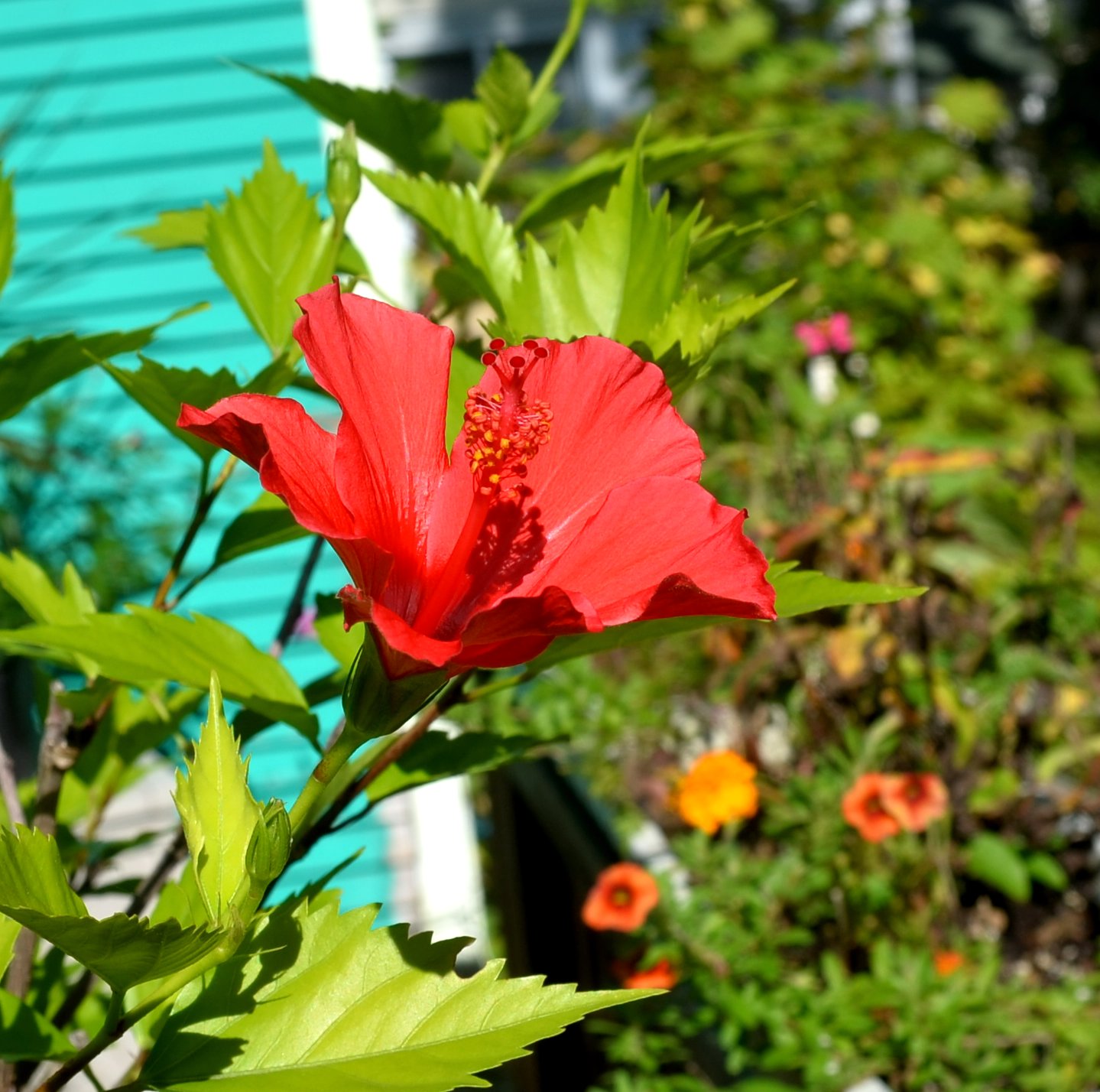
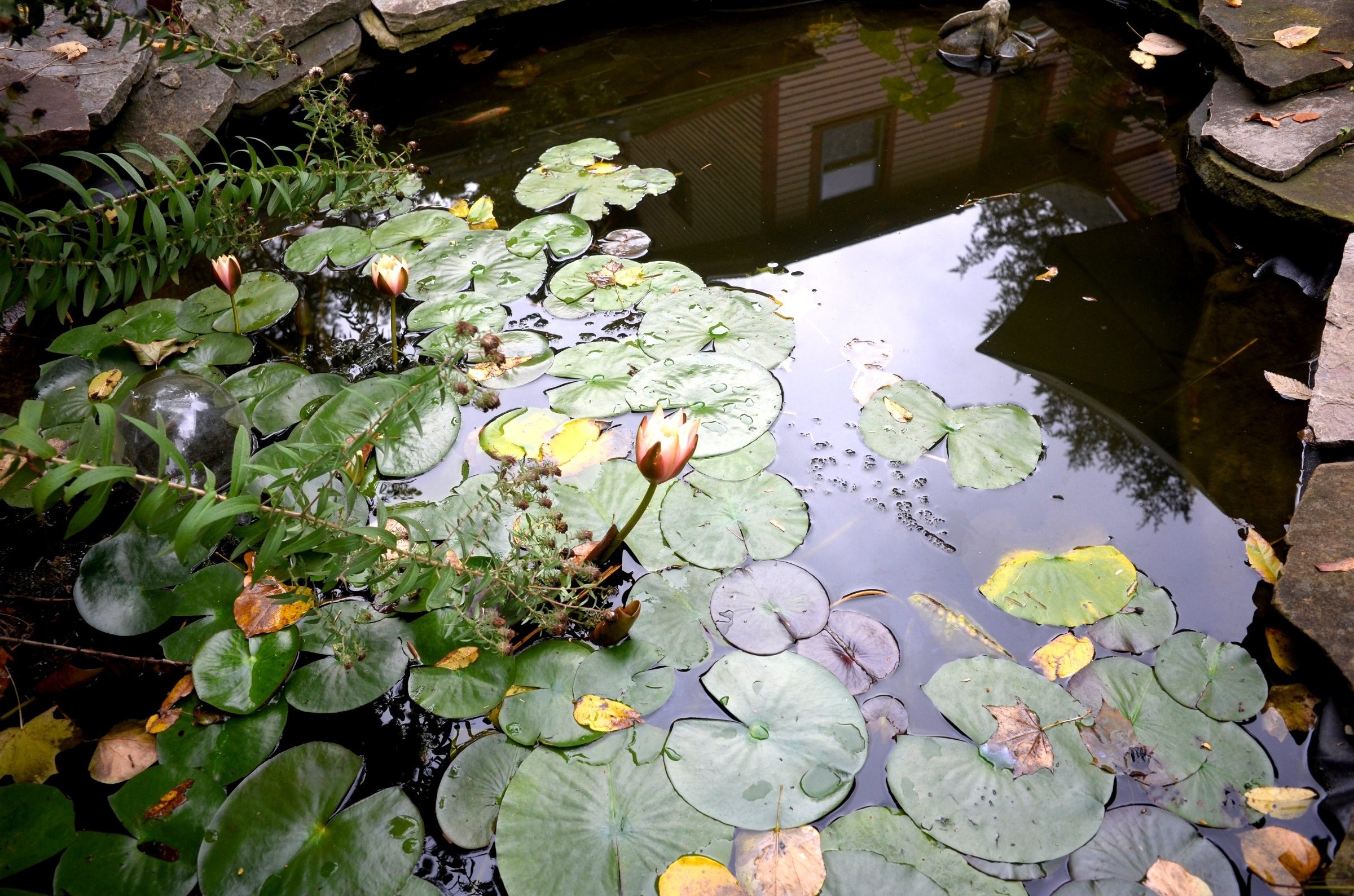
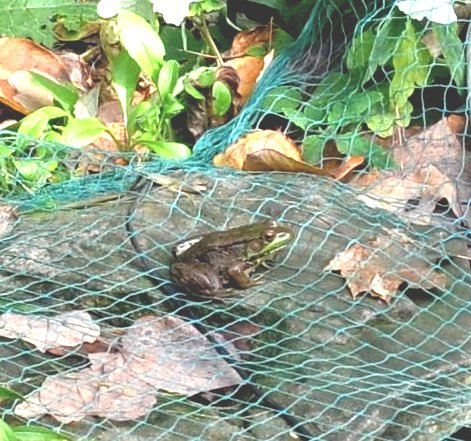
Remember that there is information in the name of the file for each image. You can see it by mousing over the image - look at the lower left of the screen. Or you can click on the image to get to the (usually) larger image. Then the info is displayed in the address line above. Sometimes the second click will actually display a different view of the original image.
I think you have seen that tigerish barklouse many times lately. They are now so large (about 2 mm) that I can distinguish them with just my glasses on. But here's a rarer sight - Three of them in one eyeful. Second image - Is this a barklouse or a leafhopper? In either case, it looks like the Rag Man. Third image - a bright gold barklouse.
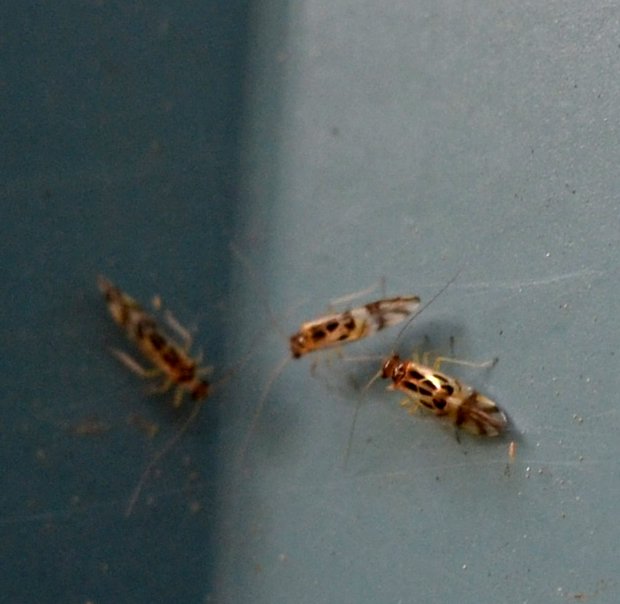

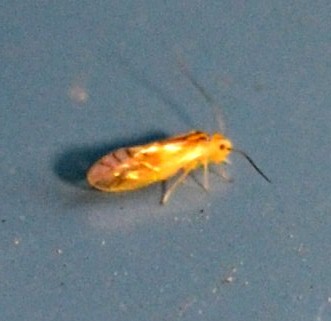
Next is the "skeletal" one, which is probably the Fateful Barklouse Lachesillla, followed by the better photo from last week. And the ever-rarer little black bee, catching the last drop of Goldenrod nectar.


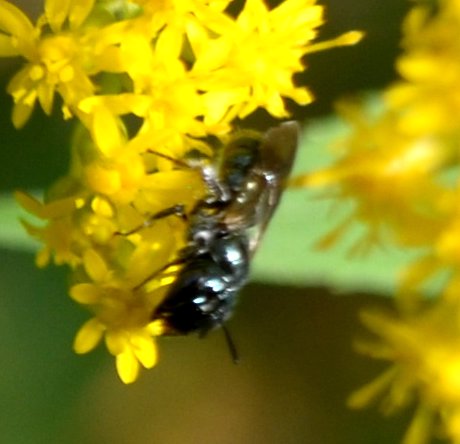
And now the Ladybug Saga continues. We still see a few larvae, black prickles with a marmalade patch on the back. Doesn't this partially metamorphosed beetle look as if it is cocking its head and saying "Say what?" ? Then we have a ladybug shedding its sub-skin, the one before the final stage, the one we usually think of as "ladybug".
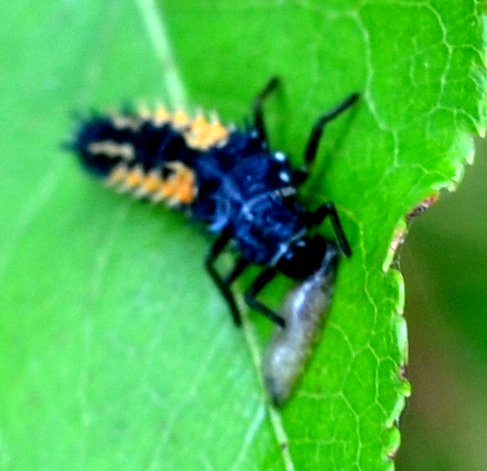

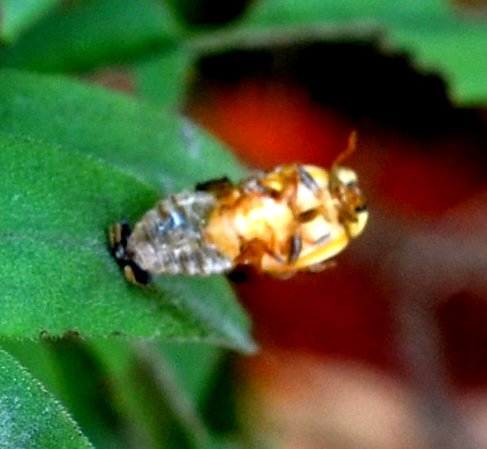
Continuing the sub-skin escape: the third image shows our beetle free again, and the fourth shows the familiar "W" on the collar and also the negative image of the spots to develop.
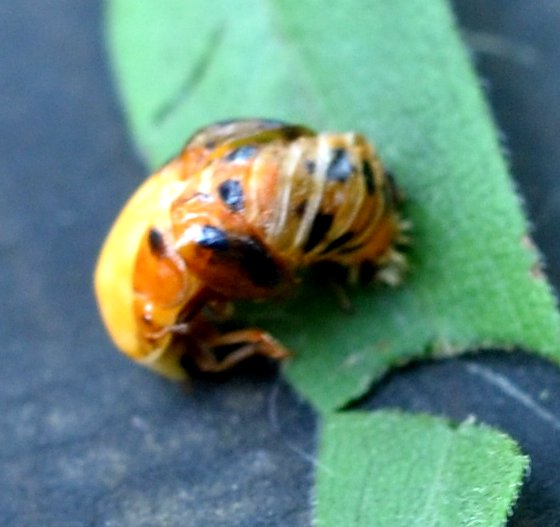
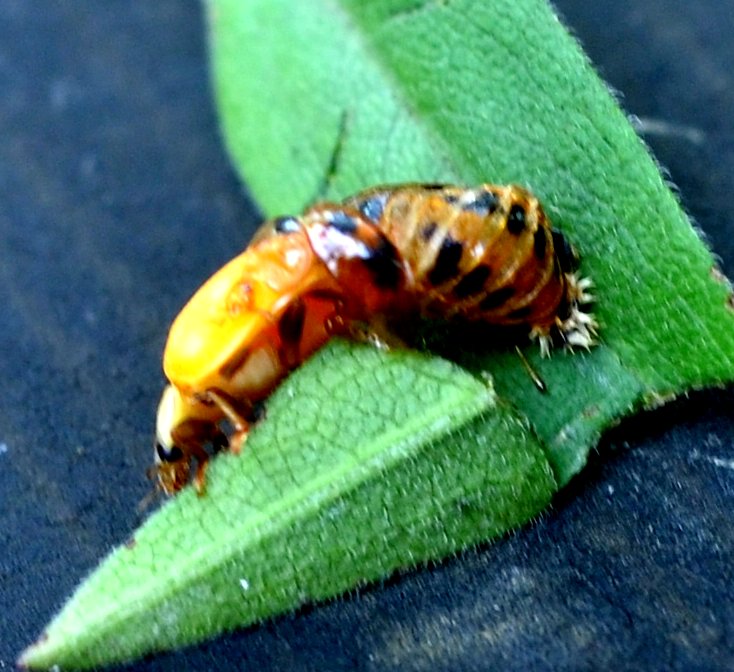
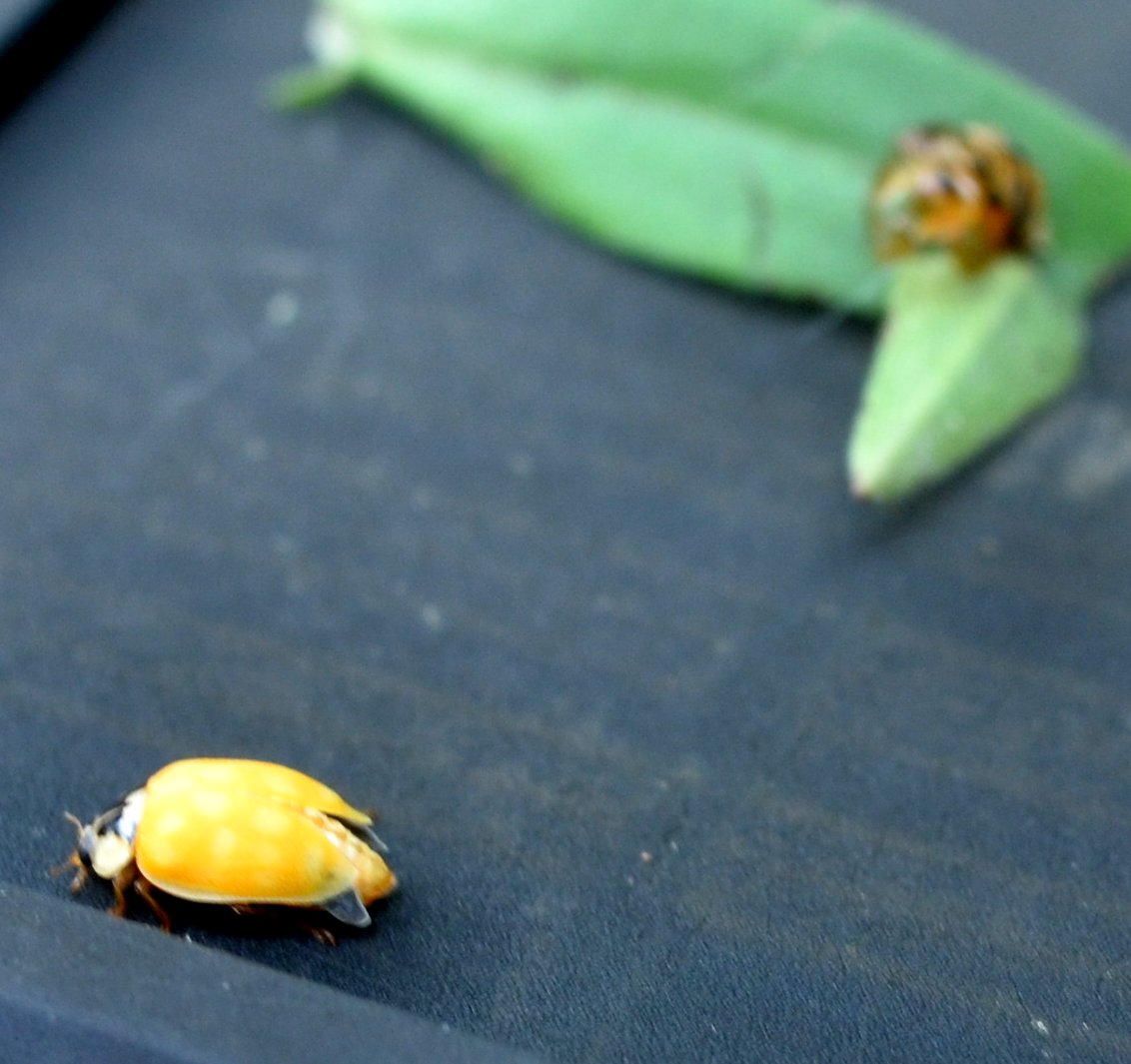
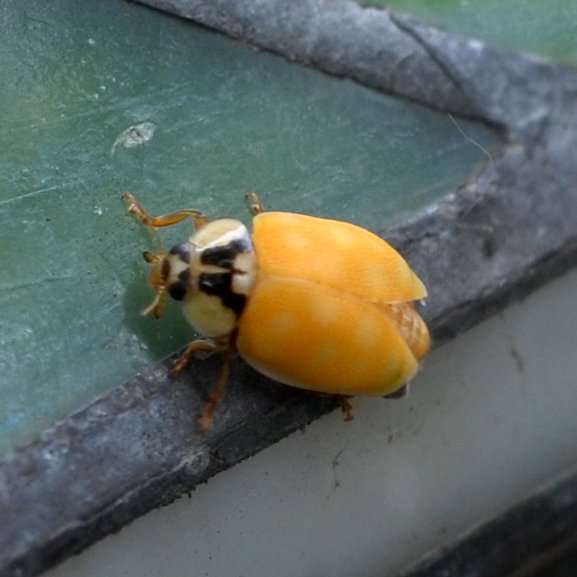
Here is another beetle. I couldn't tell if it were a weevil or not, but it is a nice shiny metallic-looking beetle.
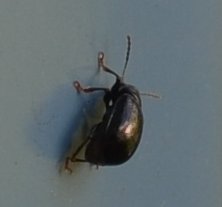
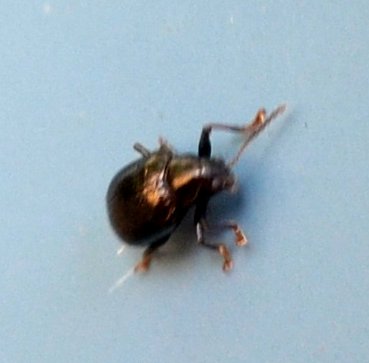

Another beetle (weevil?) and then a Redbud Bruchid. Another Bruchid. Why are they sometimes greyish and sometimes brownish? Is it a trick of the lighting?
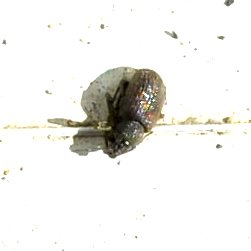
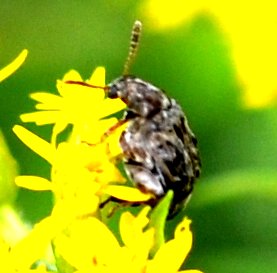
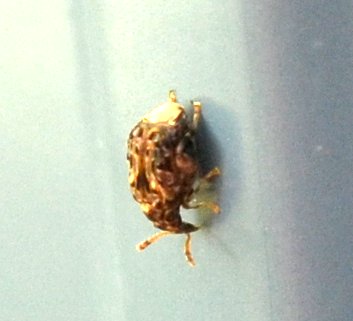
As I was opening the front door to go in from yesterday's last photo session, this bug headed down behind the recycling box to get away from me. It looks like one of the instars of the leaf-footed bug Acanthocephala terminalis. Maybe you remember that one of the last bugs we looked at last week resembled one of the instars of that very bug. The second image is of the blue instar, my very favorite! What we are seeing in the first pic is probably the next instar, a reddish-pink one.
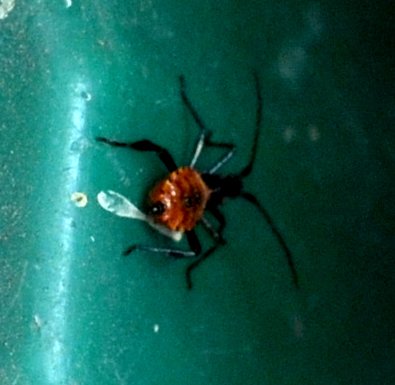
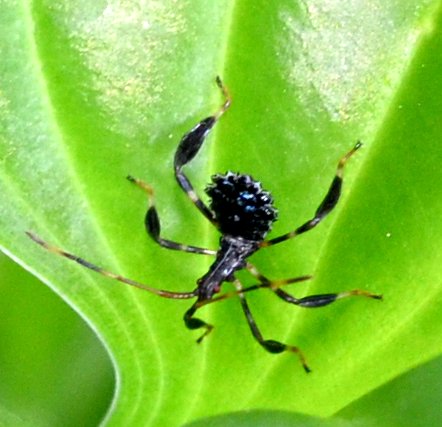
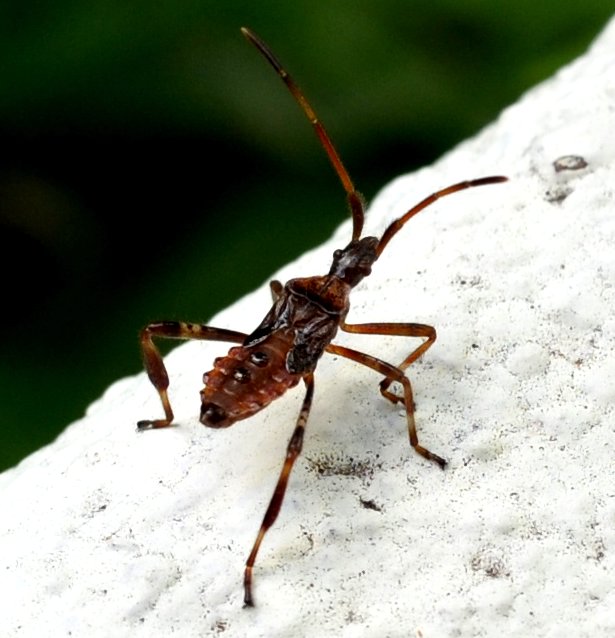
I would have thought that as the days shorten and cool off a bit, that there would be less and less variety among the denizens of the swamp. Well, yes, there is less variety, but the leafhoppers don't know about it. Here we have several different species, just of the red and white group.
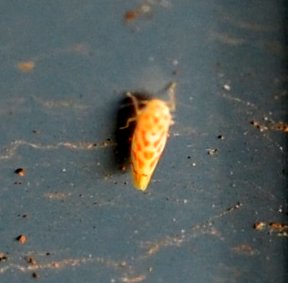
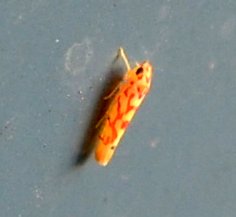
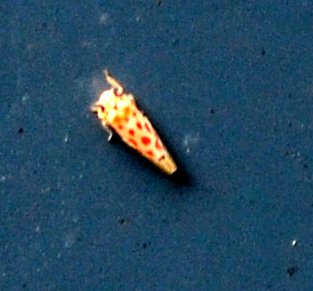
More leafhoppers! Another red on white, our beloved candy-striper, and believe it or not - a totally new one (as I recall)- a sexy pink and green one!
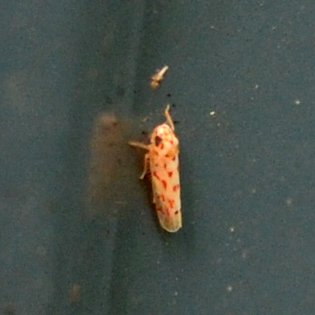
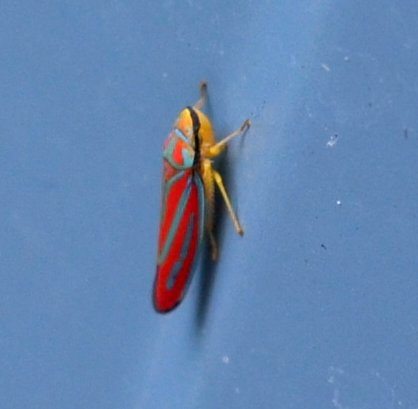
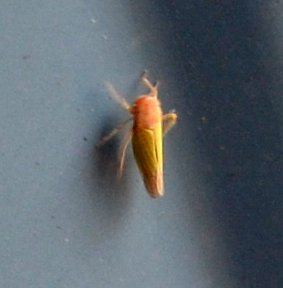
Here is our old friend, the Lygus plant bug, a stilt bug and another stilt bug, this one with white costal markings.
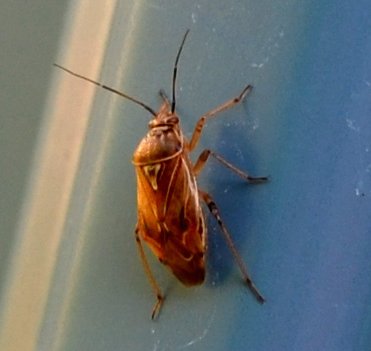
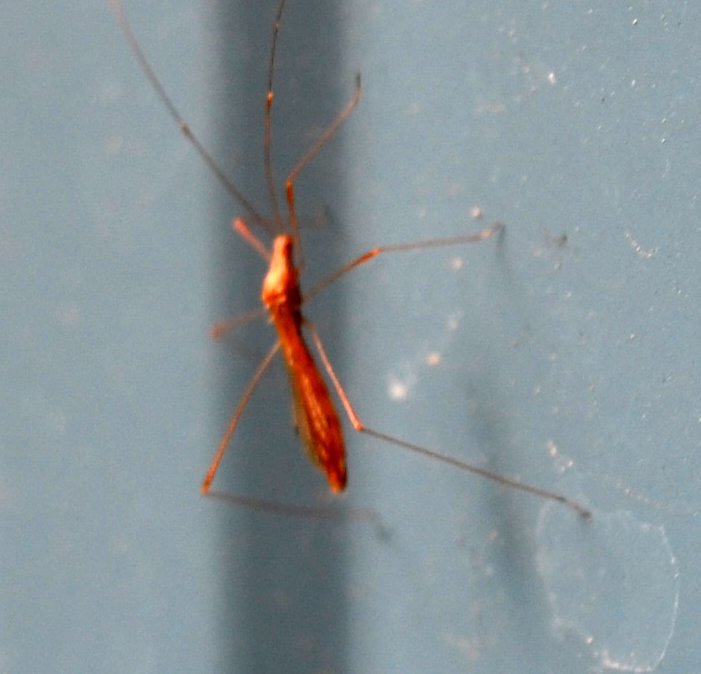
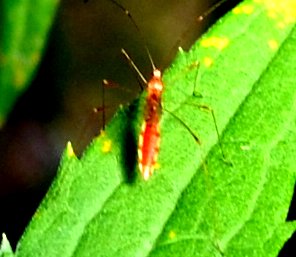
Here is the little plant-sucking bug, called the "whitefly",though it isn't at all a fly. Is this one a young Brown Marmolated Stink Bug? Why yes, I believe it is. Speaking of which, the BMSB's are now getting a bit chummy. I've had to mash two of them on my bedroom walls this week. Oh! and Speaking of which, they (the BMSB's) do stink when you mash them. Sort of like almond extract but with an unpleasant odor added in. This third one is another unknown one - it COULD be a kind of leafhopper, but I've no real answer.



We're up to THREE kinds of bugs called "Seed Bugs". The Western Conifer Seed Bug (Leptoglossus occidentalis)is a leaf-footed bug, unlike the other two. The Long-necked Seed Bug (Myodocha serripes) and the Long-necked Seed Bug Nymph look so different that until (just looking them up) I learned that the second picture is the adult and the third is the nymph I was sure they were different species of long-necked seed bugs!
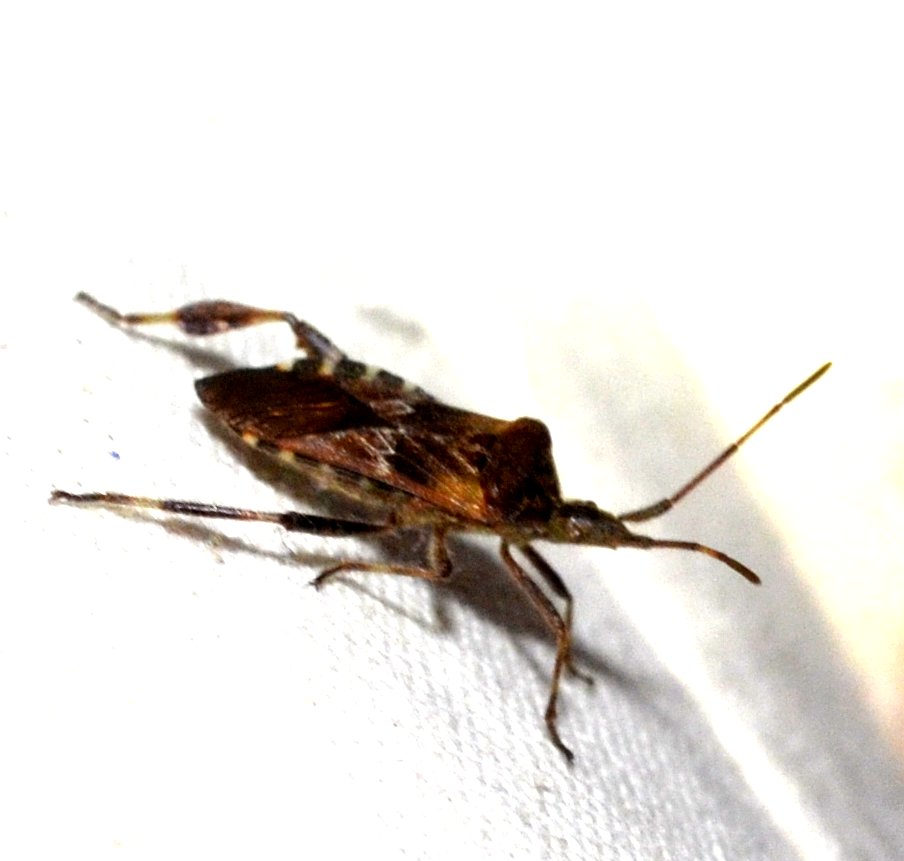
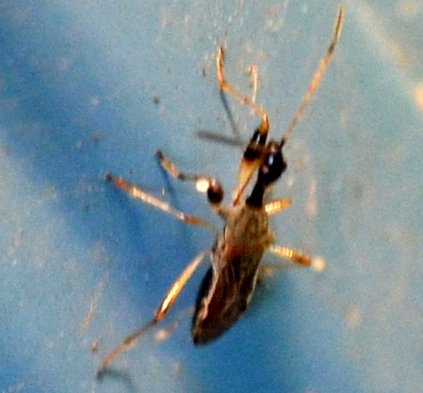
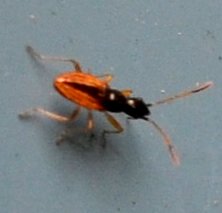
We've suddenly been seeing several kinds of things that look like assassin bug nymphs but with bits of differencesG. Here is our old favorite, Zelus luridus (here luridus means "green"). Then there is this brown one. I've seen brown Zelus's but they were the same shape as the green ones. Well, I think this is still Zelus - I must have shot this from an angle that foreshortened the body. But how could I get so distracted as to forget the one boxelder bug so far!
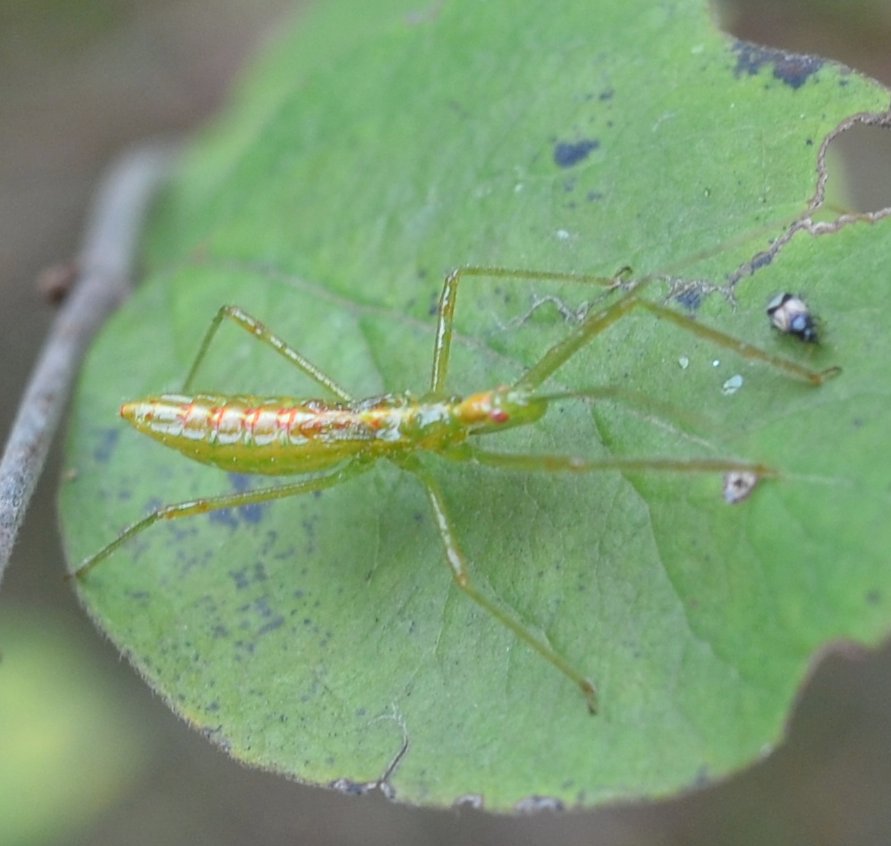
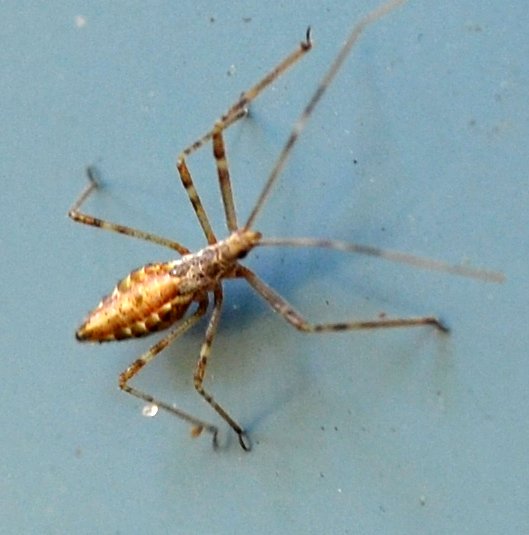
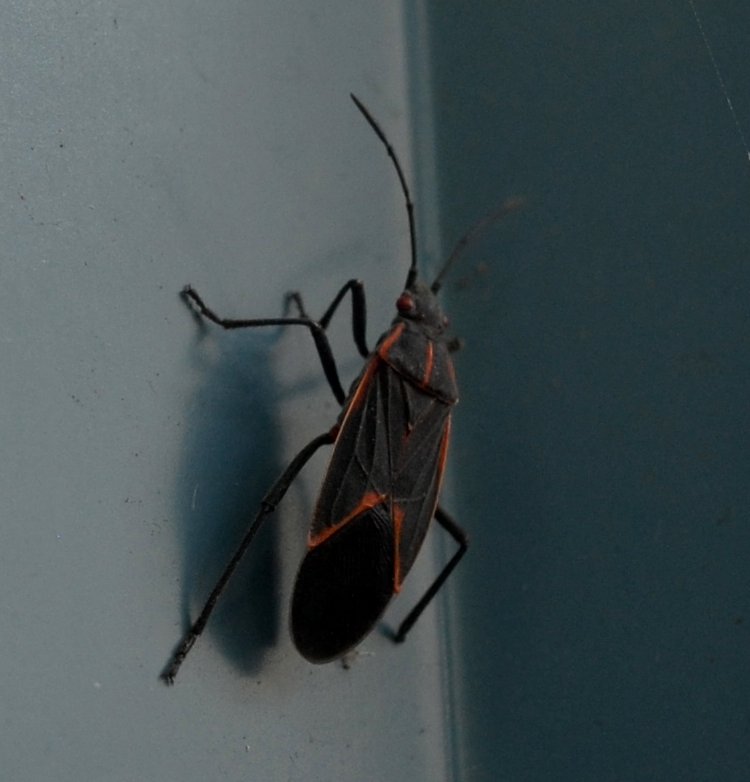
A few different kinds of larvae appeared this week. There were a LOT of these little light-colored ones scattered among the Ladybug larvae. I've no idea what they are. I'm willing to bet that the second (darker-colored) one is either a pupa or getting ready to shed its cat skin and become a pupa. This tiny looper (inch-worm) will turn into a Geometrid moth (so named from its occupation of "measuring the earth"). They include some very pretty moths with a brightly colored hind wing, hidden under its front wings when it alights.
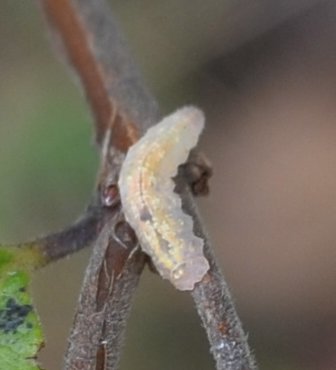
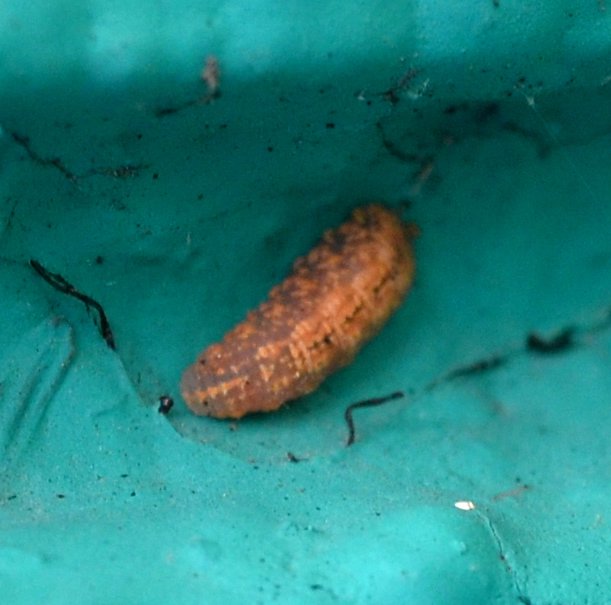
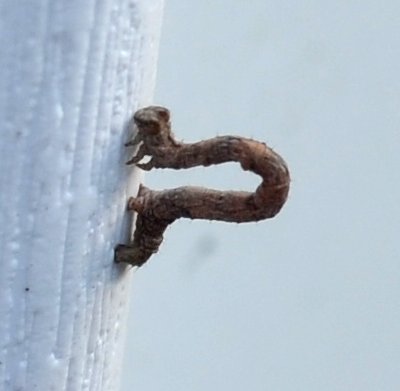
This mysterious creature - what is it? It looked to me like a couple or three loopers linked together. The third one definitely looks like something like a barklouse nymph. And the middle one looks as if it just HAD to be something. But back to caterpillars, this beautiful specimen was locked onto a twig of Autumn Joy. Have you ever seen anything so colorful? I finally found it my Caterpillars of Eastern North Americabook. It's the larva of the Brown-hooded Owlet, a rather plain brown moth. Apparently it often falls victim to a Tachinid fly, who lays its eggs in the caterpillar. You don't want to know the rest.
 10 12 17 1.jpg)

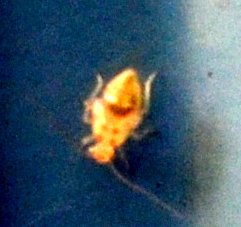
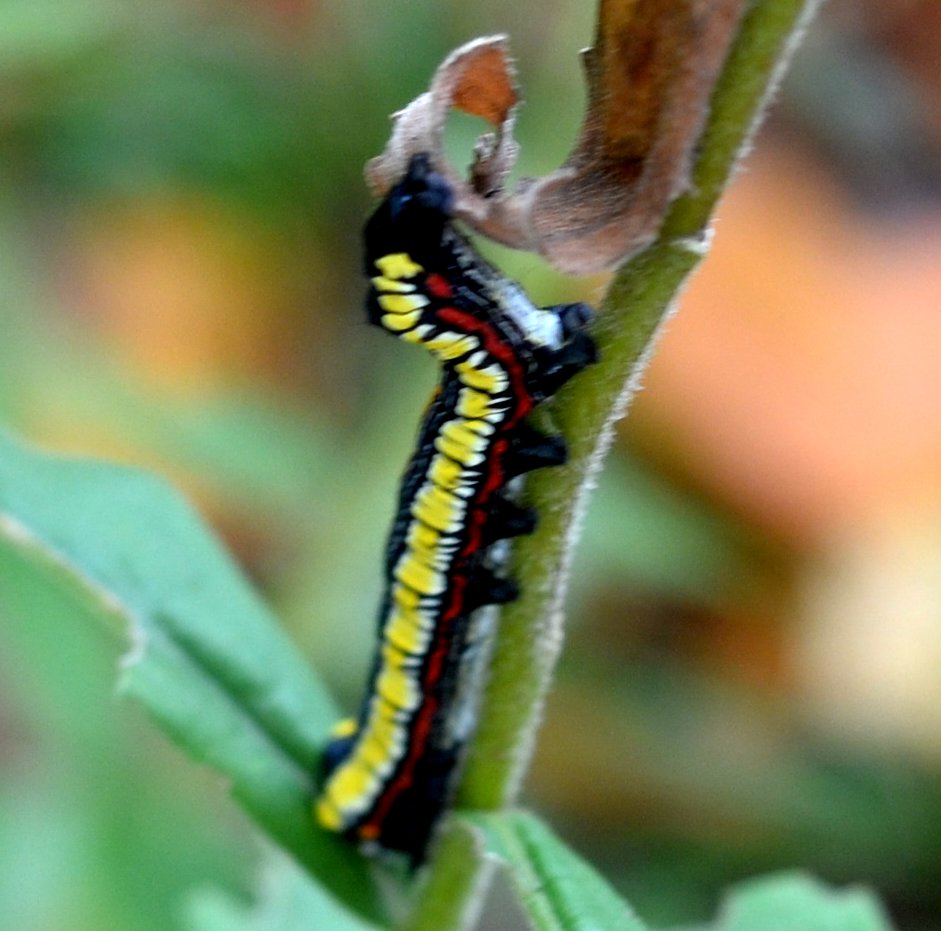
Here are two more c-words: a jumping bush cricket and a new (to me) centipede. I have heard more crickets this year than ever in my life, most of them hidden in a bush - a couple of them in the euonymus next to the porch. The centipede is called a Stone Centipede - it's got an order Lithobiomorpha of its own. That was a surprise for me too!

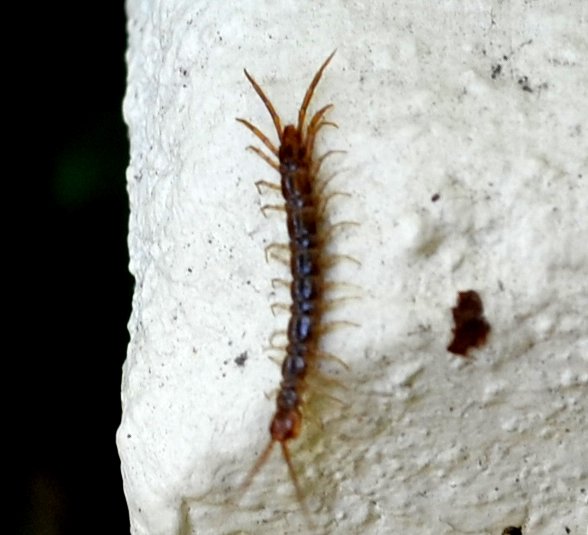
Now to the flies: Remember the fungus gnats we see in the spring? They are back! Here is what I think is a new kind of midge. The mosquito has the banded legs of an Aedes.
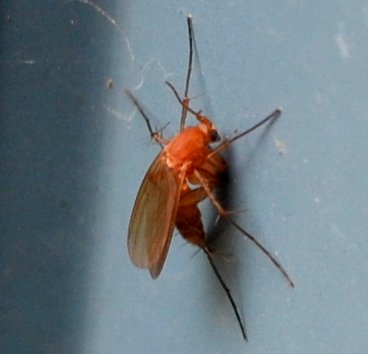
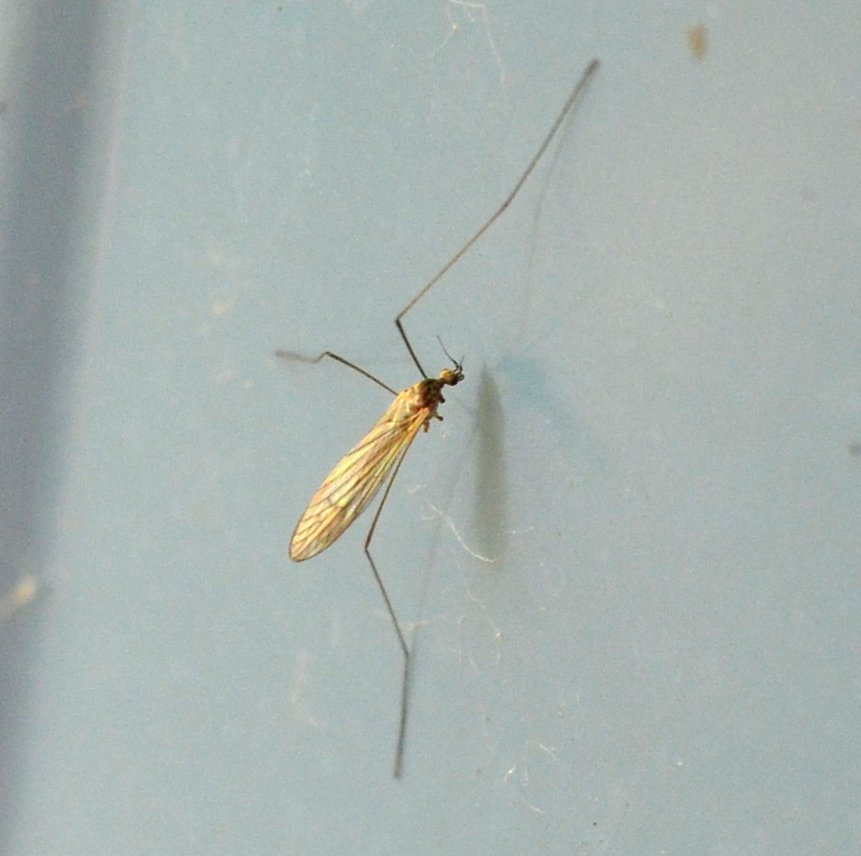

Here are a few more mosquitoes, maybe the same individual.
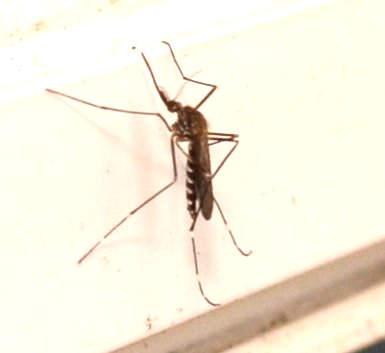

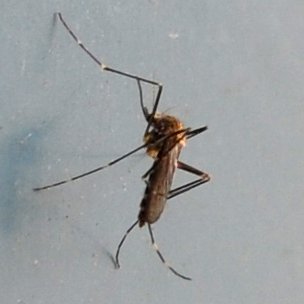
This is one of the prettiest moth flies I've seen. Usually I don't pay them much attention but by now I think they're really quite lovely. I especially like the curly decorations on the back of this little fly. Last is one of those orange flies with lightly spotted wings.
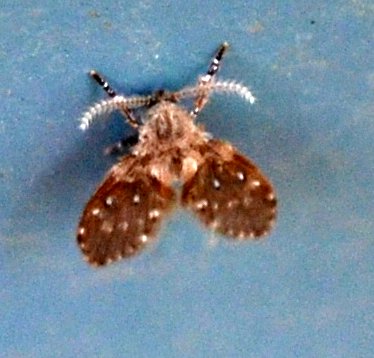

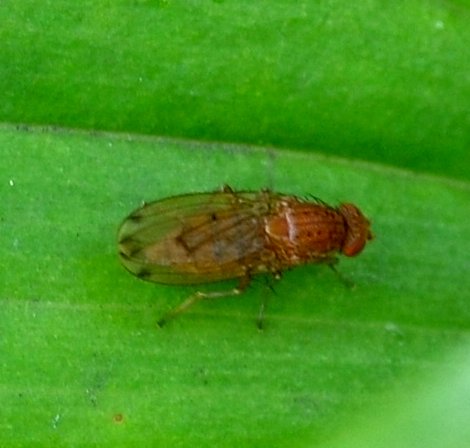
This fly was hiding under a leaf on an old stem. Thanks to it for holding its wing aside so I could see the spots. Here's another orange fly which seems to be going over some old accounts. This tiny orange mystery is quite a delicate little thing.
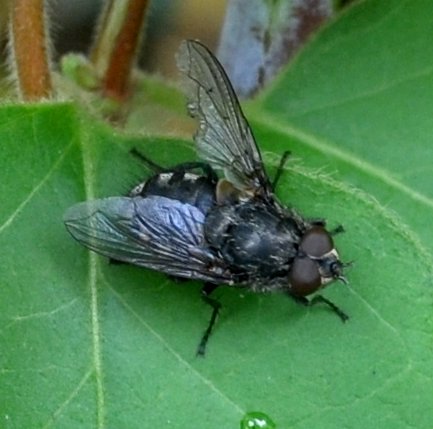
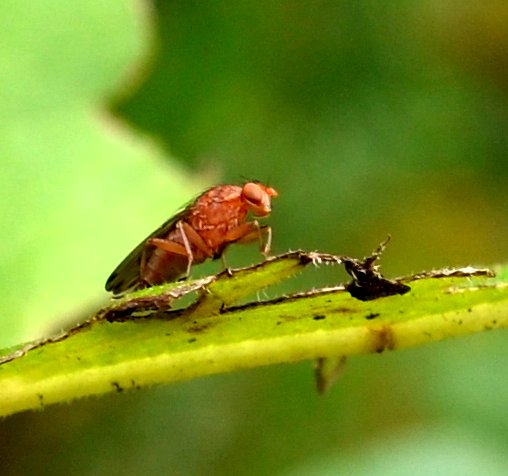
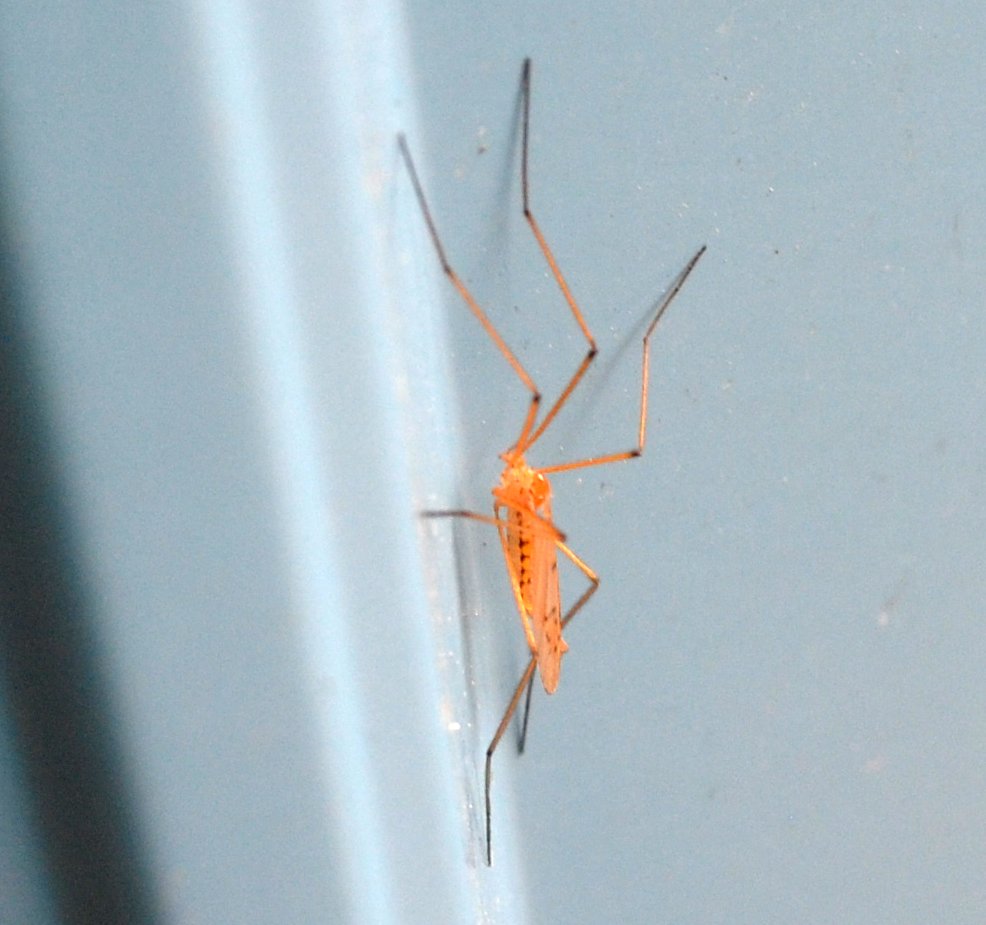
Even if this turns out to be just a simple root maggot fly, I like the purple and orange tones together. No clue what the second one is! The third is of course an ordinary blue fly.
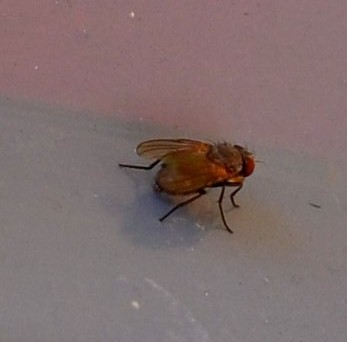
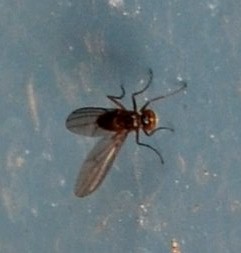
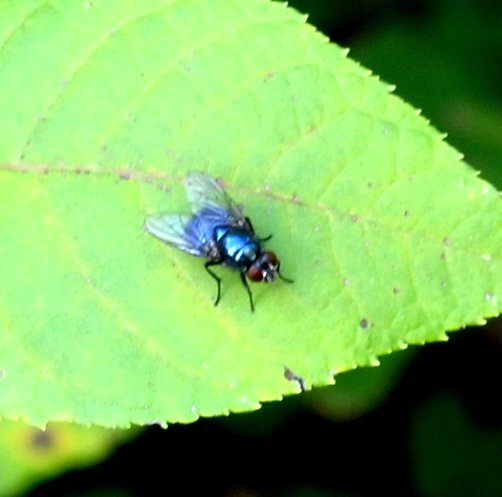
For some reason, these hover flies were flitting about on the hostas, raising and lowering their little tails as if they were laying eggs. It does look as if there is something coming out their rear ends.
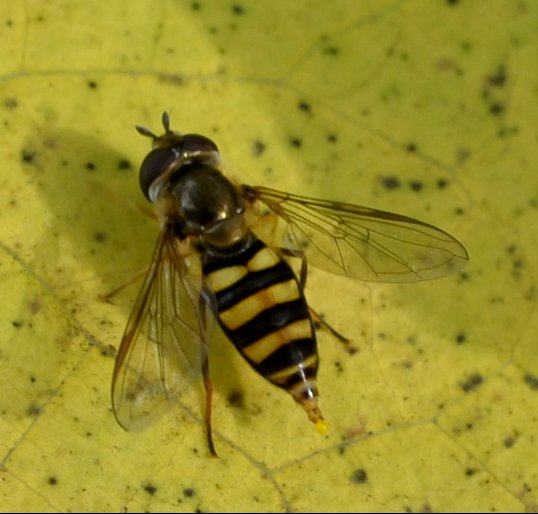
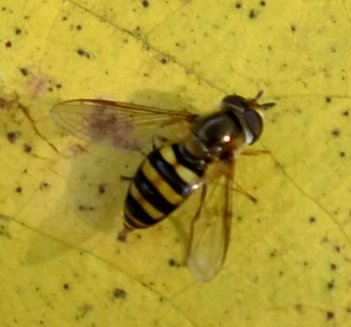
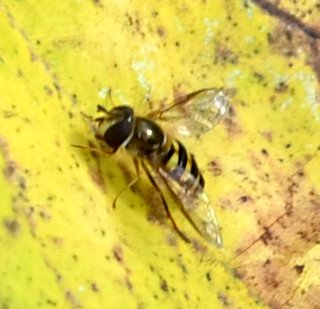
This one is more often seen near the pond laying its eggs in the water. It's Helophilus fasciatus. The third image is of a harvestman with that gorgeous reddish body.


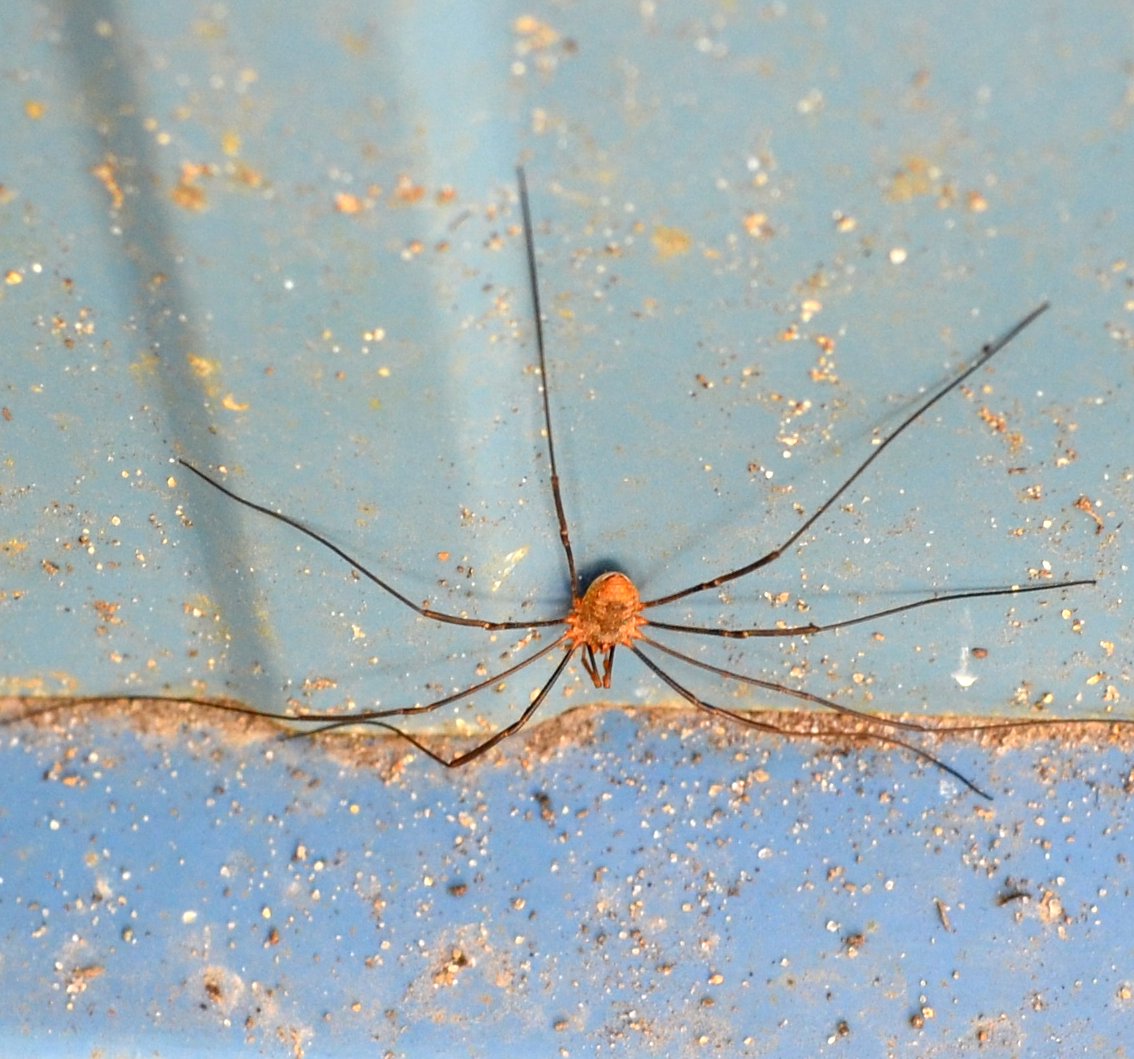
This was a great day for lacewings. I saw two distinct green lacewings and two brown ones. These are two of the brown ones, of which the second seems to be eating a smaller creature, probably an Aphid (one of their favorite foods). The purplish flattish creature is a green lacewing larva.

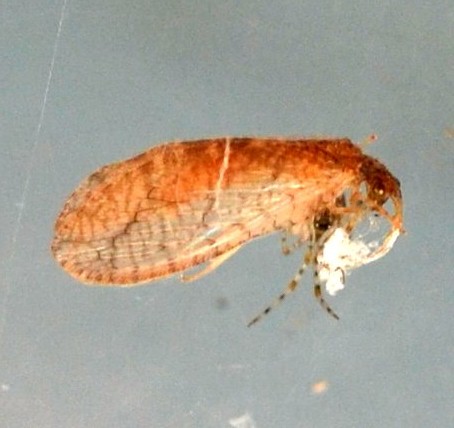
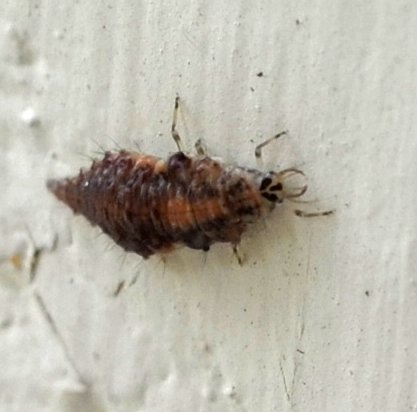
Here are two m-words: a lovely golden moth and a tiny red mite.
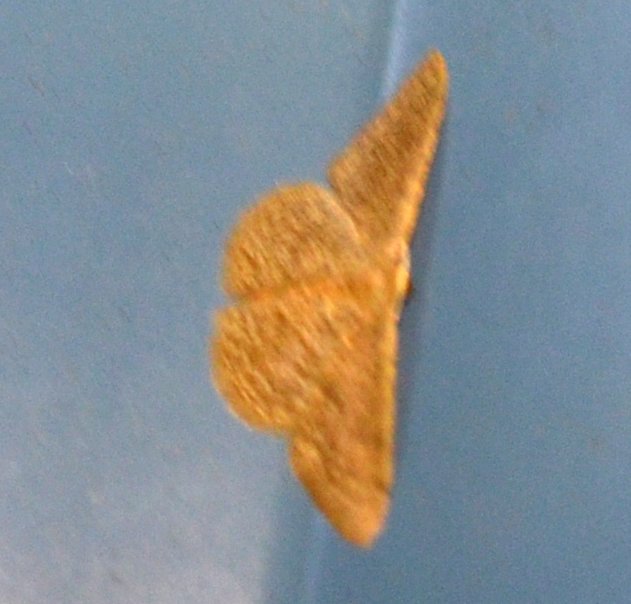

We did see a number of spiders. Here are a Common House Spider, a crab spider, and a beautiful first time seen (by me)Jumping Spider.
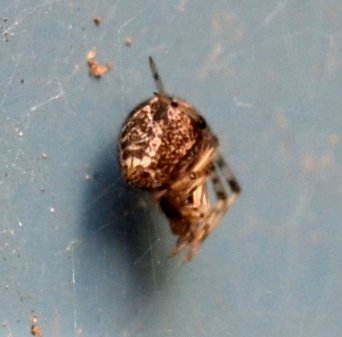
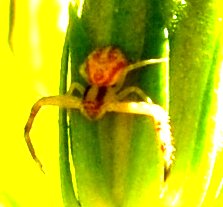
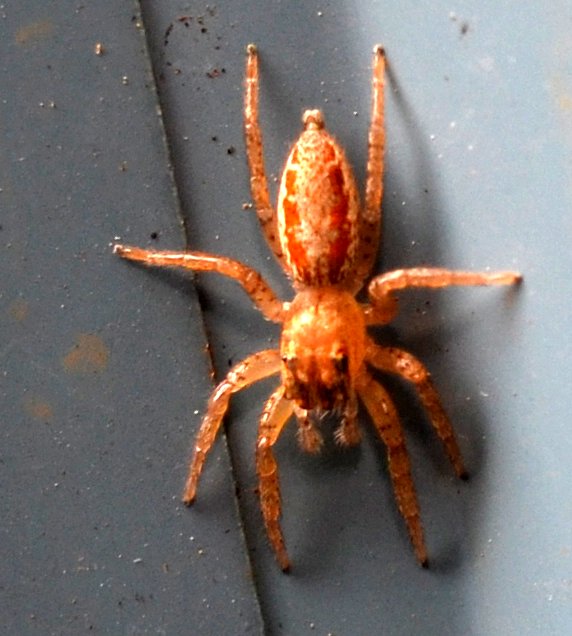
Another jumping spider, Naphrys pulex, I hope; A male Cross Orbweaver; A Pirate Spider; and a young Toad, probably one of the summer's crew.
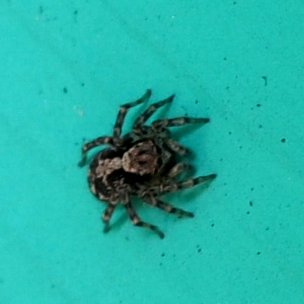
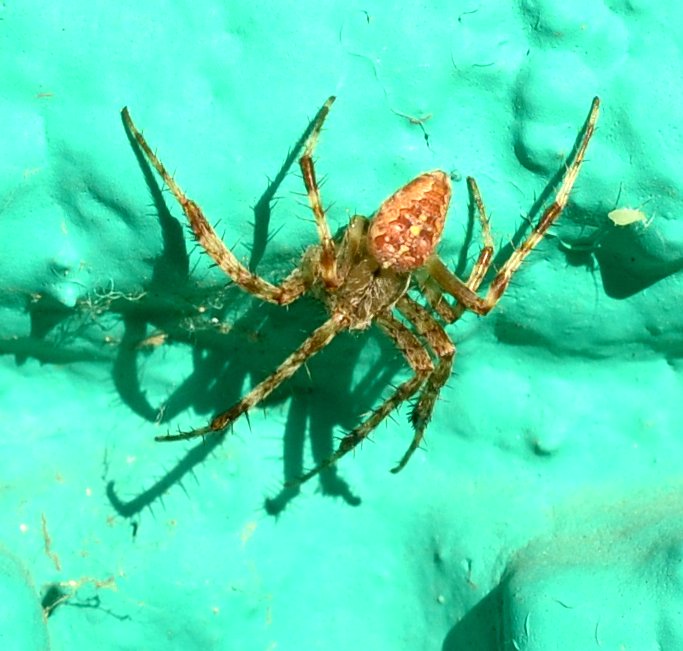
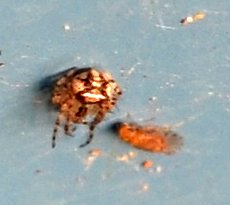
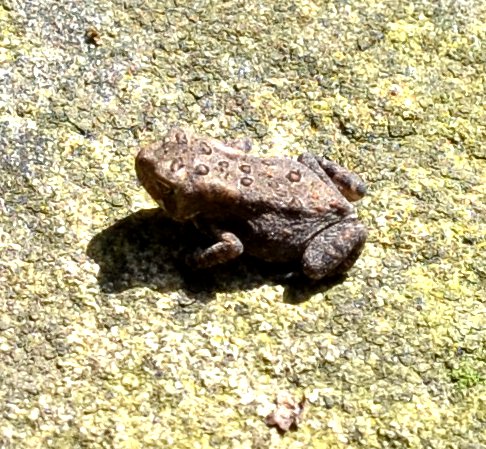
We're down to the home stretch, and I see a teensy Ichneumon Wasp and a Thread-waisted Wasp in the Goldenrod.
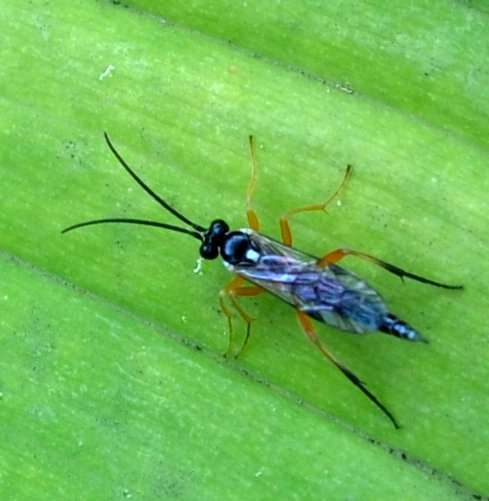
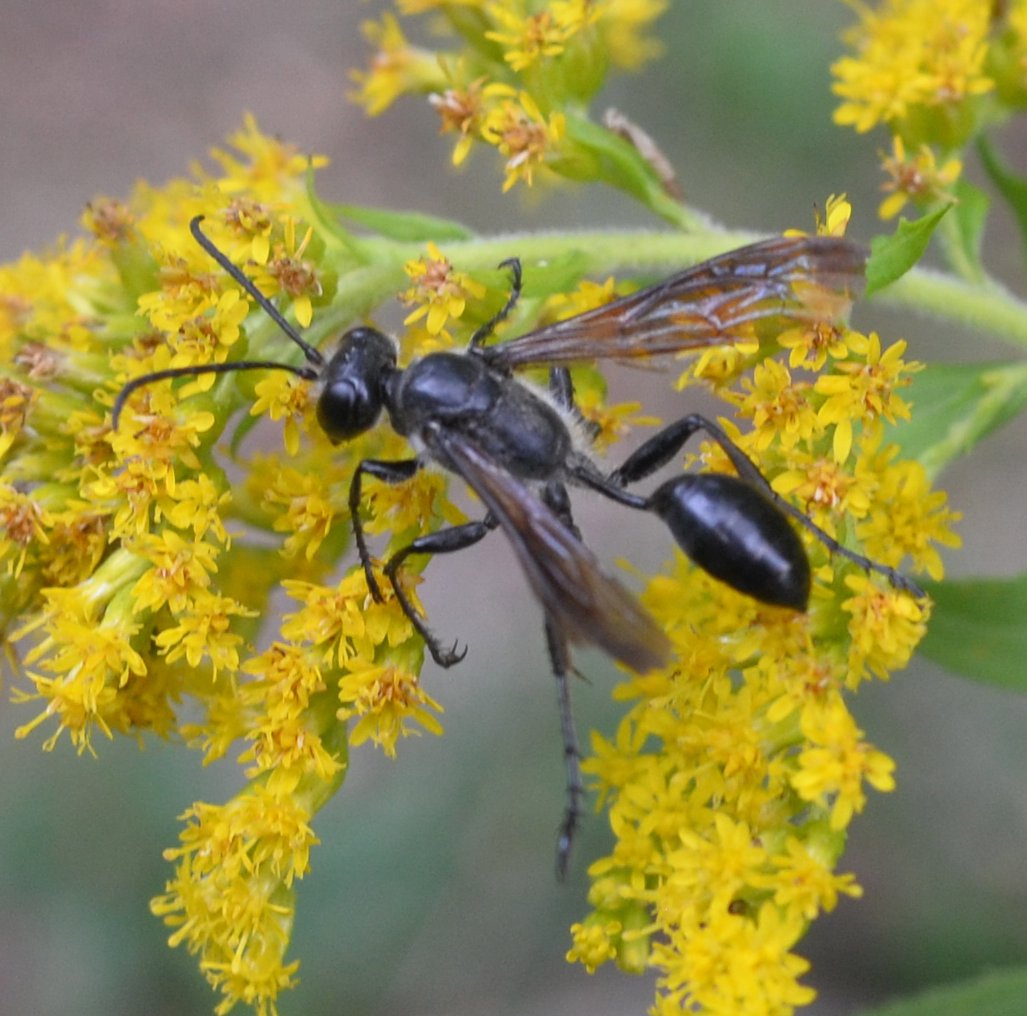
If you liked last week's classic poem "Gladys Danby", maybe you can cajole me into giving you the first stanza of "Their Haven" by that famous American poet, Ed Growling Pooh, next time. Until then, enjoy whatever you are doing!
Love,
Martha
Back to October 8, 2017
Forward to October 22, 2017
Back to 2017 menu
Back to main menu
copyright Martha O'Kennon 2017

















































 10 12 17 1.jpg)







































